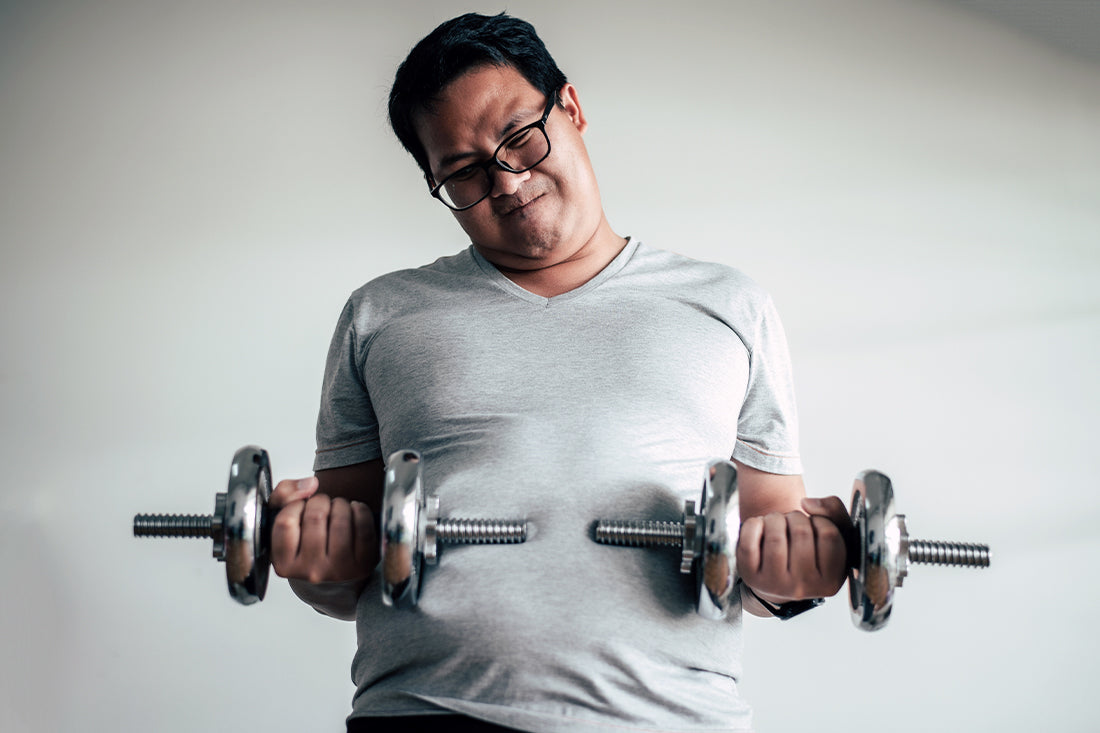Staying active in your 50s isn’t just about looking good—it’s about feeling strong, capable, and confident in everyday tasks. From picking up groceries to getting up from the floor with ease, maintaining strength is key to enjoying a healthy and independent lifestyle.
As we age, it’s natural to experience a slow decline in muscle mass and muscle strength, especially if we don’t make time for strength training. This can affect our quality of life, making simple tasks feel tougher than they should. But the good news is, checking where you stand isn’t hard.
Here are five simple strength tests anyone in their 50s can try. They don’t require fancy equipment or a gym. Just a little space, a chair, and a few minutes of your time. These tests will give you a fair idea of your fitness level and help you figure out where your body strength stands today.
- Sit-to-Stand Test (No Arms!)
What it tests: Leg strength, balance, and core control
How to do it:
- Use a sturdy chair without armrests.
- Sit with your arms crossed over your chest.
- Set a timer for 30 seconds.
- Stand up fully and sit back down as many times as you can without using your hands.
What it means:
If you can do 12 to 15 repetitions or more, that’s a great sign your lower body is holding strong. Fewer reps might suggest a need to focus on building leg and core strength through simple movements like squats or step-ups.
- Grip Strength Test
What it tests: Upper body and muscular strength
How to do it:
- You’ll need a hand dynamometer for the most accurate reading, but if you don’t have one, try this basic version.
- Take a bathroom scale in your hands and squeeze it as hard as possible using one hand at a time. Note the pressure reading.
What it means:
While this method isn’t exact, it gives a sense of your grip strength. A weak grip might make tasks like opening jars or carrying bags feel harder. A personal trainer can help guide you through safe grip-strengthening exercises like farmer’s carries or towel wrings.
- Push-Up Test (Inclined or Standard)
What it tests: Upper body strength, particularly chest, shoulders, and triceps
How to do it:
- If standard push-ups on the floor feel tough, start with wall push-ups or on a countertop.
- Perform as many controlled push-ups as you can in a row. Focus on form—lower your chest and keep your body in a straight line.
What it means:
Doing at least 12 to 15 incline push-ups without collapsing is a good sign your body strength is up to par. If you struggle, that’s your cue to add simple upper body work into your strength training routine.
- Sit on the Floor and Stand Back Up (Without Using Hands)
What it tests: Overall muscle strength, flexibility, balance, and coordination
How to do it:
- Sit cross-legged on the floor.
- Without using your hands, try to stand back up.
What it means:
If you can do this without much wobbling or using your arms, you're doing well. It shows your core, legs, and balance are in sync. If it's challenging, focus on exercises that strengthen your hips, thighs, and core.
This is more than a test—it mimics real-life needs like getting up off the floor after playing with kids or doing yard work.
- Plank Hold Test
What it tests: Core endurance and shoulder stability
How to do it:
- Get into a forearm plank on the floor. Keep your body straight from head to heels.
- Hold the position as long as you can without sagging or lifting the hips.
What it means:
A time of 30 seconds or more suggests solid core strength. If you shake after a few seconds, it’s a signal to work more on your core muscles. Planking isn’t just about abs—it helps with posture, lower back health, and ease of movement.
Why These Tests Matter in Your 50s
In your 20s or 30s, you may not notice small changes in your physical strength. But in your 50s, these changes can affect how well you handle daily tasks and how much energy you have throughout the day.
Regular strength training helps your body keep up with life. These simple tests can reveal whether your muscles are helping you the way they should—or if it's time to support your body a bit more.
Your fitness level isn’t just about workouts—it’s about the freedom to move through life with ease, confidence, and less discomfort.
What to Do If You Struggle with a Test
Don’t worry if some of these tests feel hard. That’s the point—they’re meant to show you where you are, not to judge your fitness. If any of these felt challenging, take it as a friendly signal from your body that some areas need attention.
Here’s where a personal trainer can help. They can design a strength training plan tailored for your age, lifestyle, and health needs. The key is consistency and patience. You don’t need intense workouts—just regular movement that challenges your muscles safely.
Final Thoughts
Your 50s can be a powerful, active, and fulfilling time. Testing your body strength with these five simple exercises can help you stay aware of your strengths and work on your limits.
Remember, it's not about perfection—it’s about maintaining strength so you can enjoy all the things you love to do. Whether it’s carrying your grandkids, gardening, or just taking a walk without discomfort, staying strong means staying independent.
So, how fit are you? Try these strength tests today and find out where you stand. You might be stronger than you think—or you might be ready to start a simple routine that helps you feel better every day.






